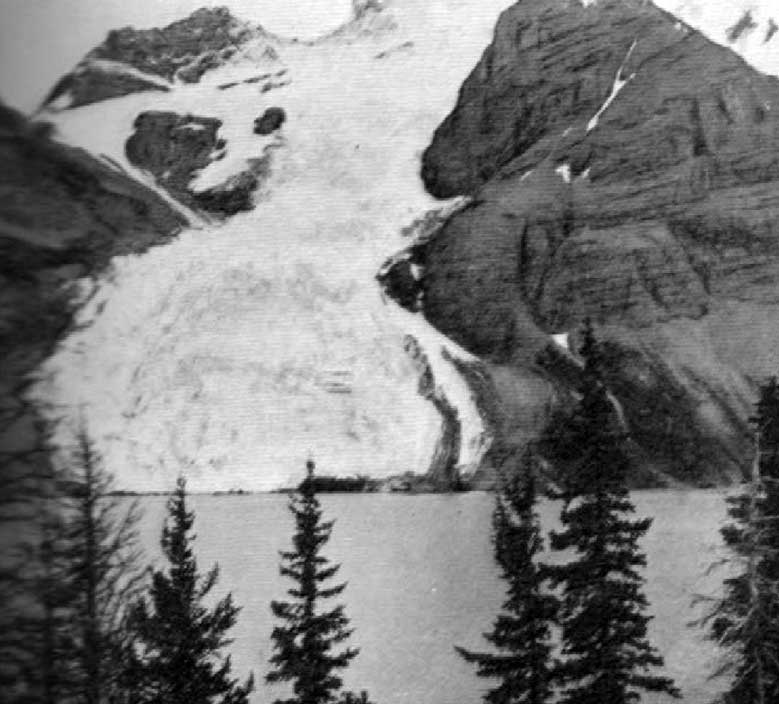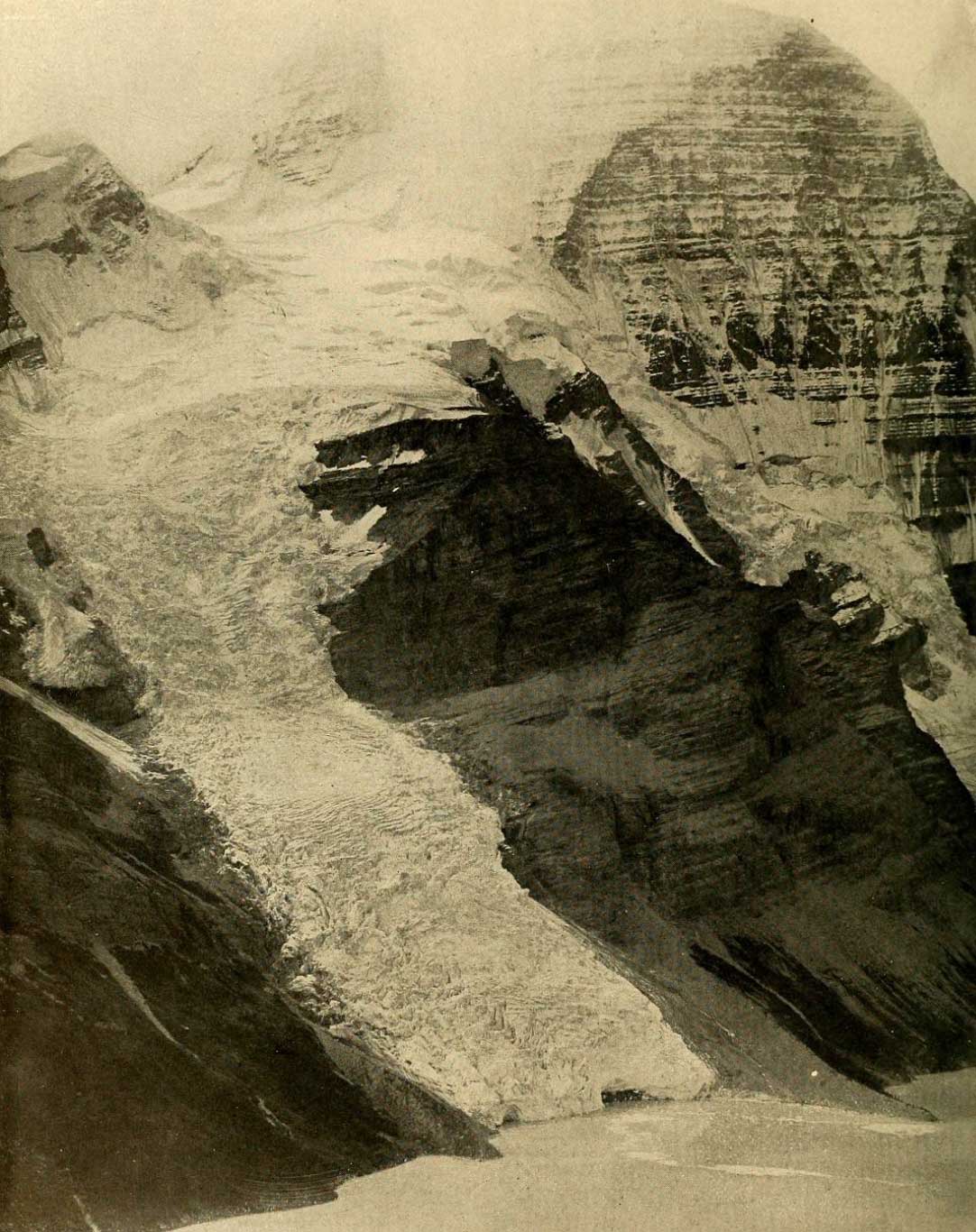Other name for Berg Glacier
53.1167 N 119.1333 W Google — GeoHack
Earliest known reference to this name is 1907 (Kinney)
Not currently an official name.

Tumbling Glacier and Berg Lake N.W. face of Mt. Robson. Photo: A.L. Mumm, 1909 Canadian Alpine Journal 1910

View of Blue or Tumbling Glacier from its névé on the slope of Robson Peak to where its foot enters Berg Lake, a descent of 5,000 feet. Photo: R. C. W. Lett National Geographic Magazine 1913
Kinney had accompanied Arthur Philemon Coleman [1852–1939] and Coleman’s brother Lucius on the first mountaineering expedition to Mount Robson in 1907, when they approached from the Fraser River side and got little further than Kinney Lake. They returned in 1908, guided by Adolphus Moberly [1887– ?] and John Yates [1880– ?], who took them up the Moose River valley and approached Robson from the north. They became the first people to report on Berg Lake, Tumbling Glacier, Robson Glacier, Rearguard Mountain, The Helmet, and Extinguisher Tower, features Kinney named after their appearances.
“From the elevated ice-field, fed by avalanching snows from the sides of Robson, a gigantic ice cascade tumbles down rock precipices and buries its nose in the waters of Berg Lake,” wrote Arthur Oliver Wheeler [1860–1945] after his 1911 visit. “At frequent intervals great chunks of ice break off with a report like cannon, and, bounding and rattling down the steep incline, plunge into the clear water of the lake. Dr. Coleman has named the overhanging ice-fall ‘The Blue Glacier,’ The term is not strong enough: ‘Tumbling Glacier,’ though not so euphonious, is a better name to express the activity of such a unique feature.” [2]
“Blue Glacier is a wonderful stream of slipping, sheering, blue, green, and white ice. Why it does not slip and slide as a whole down into Berg Lake is one of the unsolved secrets of this great mountain,” wrote Charles Doolittle Walcott [1850–1927] in his report on the 1912 Smithsonian expedition to Mount Robson. [3]
- 1. Kinney, George Rex Boyer [1872–1961]. London, England: Royal Geographical Society Archives. Letter to Arthur Hinks (1917).
- 2. Wheeler, Arthur Oliver Oliver [1860–1945]. “The Mountains of the Yellowhead Pass.” Alpine Journal, Vol. 26, No.198 (1912):382
- 3. Walcott, Charles Doolittle D. [1850–1927]. “The monarch of the Canadian Rockies.” National Geographic Magazine, (1913):626. Internet Archive